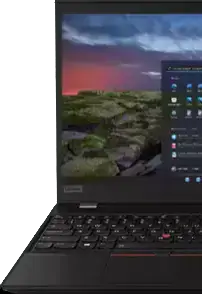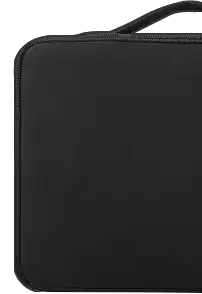What is a URL?
A URL (Uniform Resource Locator) is a web address that provides a unique, specific location for a particular resource on the internet. It contains information about what you're looking for as well as the protocol used to access it. URLs are typically used to locate web pages, but they can also be used to locate other resources such as images, videos, audio files and documents. In other words, URLs make it possible to identify where something is located online so that you can view or download it.
How do URLs work?
URL (Uniform Resource Locator) is essentially the address used to locate resources on the internet. It consists of several parts: the protocol (e.g., http or https), which determines how data is transmitted; the hostname (the domain name, like www.example.com), which identifies the website; and the path (e.g., /blog/article), which specifies the exact location of a resource on that website. Some URLs may also include query parameters (e.g., ?id=123) to pass additional data or fragments (e.g., #section) to jump to specific sections of a page. Together, these components guide browsers to the correct resource.
What is an example of a URL address?
For example, if you want to visit Facebook's website, your browser would use the following URL to get there:
A URL, or Uniform Resource Locator, is essentially the web address you type into your browser's address bar to visit a website. It is a specific example of how you can reach a particular online destination.
The https part of the URL tells your browser which protocol to use when accessing this website; then it looks up www.facebook.com, the hostname or domain name of Facebook's website; and finally, it requests the page at '/' path on their server—in this case, their homepage.
So, whether it's Facebook or any other site, the URL is your digital roadmap, guiding you to the content you wish to explore.
What happens when you type the URL into a browser's address bar?
When you input a URL into a browser’s address bar, it directs the browser to navigate to the specified site, allowing you to access the content on that web page.
What is a full URL?
A full URL is a complete web address used to locate a specific site or page on the Internet. For instance, a complete URL might look like https://www.example.com/.
What is the difference between HTTP and HTTPS?
When browsing the web, you may notice URLs starting with either "HTTP" or "HTTPS." These two prefixes refer to different protocols used for accessing online resources.
HTTP: HTTP, or Hypertext Transfer Protocol, serves as a fundamental method for transferring information between your web browser and a server. However, this data travels in an unencrypted form, making it susceptible to interception by unauthorized individuals. This lack of encryption means any data, such as login details or personal information, could potentially be exposed.
HTTPS: HTTPS, standing for Hypertext Transfer Protocol Secure, enhances the basic HTTP by incorporating a layer of security. This is achieved using SSL (Secure Sockets Layer) or its successor, Transport Layer Security (TLS), which encrypts the data being exchanged. This encryption transforms your sensitive information into an unreadable format for anyone trying to intercept it. Therefore, using HTTPS ensures that data like credit card numbers or passwords remain protected.
Ultimately, while both protocols facilitate web communication, HTTPS offers a crucial layer of security—ensuring your browsing activities and personal data are kept private and secure.
How do I find out what the URL of a web page is?
Discovering the URL of a specific web page is quite simple and an essential skill for browsing the internet. Here's how you can easily find it:
- Locate the Address Bar:Navigate to the top of your web browser where you'll see a long, rectangular box. This is known as the address bar.
- Identify the URL:n the address bar, you’ll see a combination of text and symbols. This comprehensive string is the web page's URL, indicating where the page is located on the internet.
- Select the URL:Click inside the address bar, and the entire URL should highlight, ready for copying or additional actions.
- Copy the URL:To share or save it, right-click the highlighted text and select 'Copy', or use keyboard shortcuts like Ctrl+C for Windows.
- Pasting the URL:When you're ready to use it, simply paste it into a document or message with Ctrl+V for Windows.
Additional Tips:
- Whether you're using browsers like Google Chrome, Mozilla Firefox, or Microsoft Edge, the process is quite similar.
- You can also right-click a link on a webpage and select 'Copy link address' to get the URL without navigating to the page.
Understanding URLs is crucial for efficiently navigating and sharing content across the web. Happy browsing!
What are FTP URLs and how are they used?
FTP URLs play a crucial role in the digital landscape, particularly when it comes to file management. But what exactly are they, and how do they function in our tech-driven world?
FTP stands for File Transfer Protocol. An FTP URL is a link that provides access to files stored on an FTP server. This type of URL is specifically designed to facilitate the downloading, uploading, or managing of files over the Internet.
How FTP URLs Work
- Structure:An FTP URL begins with the prefix ftp://. This indicates that the link is using the FTP protocol, distinct from HTTP or HTTPS.
- Server Details:Following the prefix, you’ll find the domain name or IP address. This tells your browser or FTP client the exact server location to connect with.
- Pathway to Files: The URL often includes a specific path to the file or directory, ensuring you reach the intended location on the server.
Uses of FTP URLs
- Large File Transfers:FTP URLs are ideally used for managing large files. They provide a reliable method to download or upload sizable data without interruption.
- Server Maintenance and Updates:When servers need to synchronize data or if files need updating, FTP URLs offer a straightforward means of transferring files between systems.
- Access Control: With the ability to set permissions and require authentication, FTP URLs are a secure option for sensitive files.
In essence, FTP URLs are essential tools for anyone needing efficient file transfer capabilities. They simplify the process of accessing and managing files across different With the ability to set permissions and require authentication, FTP URLs are a secure option for sensitive files. servers, making them indispensable for both personal and professional use.
What are mailto URLs and how are they used?
Mailto URLs are a type of hyperlink designed to launch a new email message directly from a web browser or email client. When a user clicks on a mailto URL, their default email application opens with the recipient's email address already filled in.
How Mailto URLs Work
A mailto URL starts with the prefix mailto: followed by one or more email addresses. For instance, a simple mailto link might look like this:
mailto:example@example.com
Common Uses of Mailto URLs
- Email Signatures:In professional emails, signatures often include mailto links for quick email communications.
- Website Contact Links:Many websites use mailto links to provide visitors with an easy way to reach out for support, inquiries, or feedback.
- Marketing Campaigns:Businesses can use mailto links in newsletters or promotional materials to drive engagement and increase response rates.
Enhancing Mailto URLs
Mailto URLs can be expanded with additional parameters to pre-fill subject lines, Cc or Bcc fields, or even include body text. For example:
mailto:example@example.com?subject=Inquiry&cc=cc@example.com&body=Hello!
This versatile link helps streamline communication processes and enhances user experience by reducing the steps needed to create an email. By intelligently integrating mailto URLs, businesses can facilitate smoother interactions with their audience.
What are subdomains?
Subdomains are an extension of a domain name that allows users to organize websites into categories related by topic or purpose. They are generally separated by periods and come before the main domain name in a URL; for example,
subdomain.example.com. This type of organization allows you to create separate webpages within their main websites without having to create new domains for each one. Some common subdomains include ‘blog’ or ‘store’ for websites with blogs and e-commerce stores respectively.
What is a relative link?
Relative links are used when linking from one page on a website to another page on that same website - usually via hyperlink text or a menu item (such as "HOME" at the top of most sites). Rather than having to write out the full URL each time you want link internally on your site (which would be tedious!), relative links make this process much easier by only referring back to specific locations within your own domain hierarchy. For example, rather than writing out http://www.
What is an absolute link?
An absolute link refers directly back to its source and includes both the domain name and all other components included in its original URL path - including all parameters such as subdirectories and even individual file names after that point if applicable. This makes them useful for linking from one website entirely unrelated from yours since they will always direct users directly back to its exact source regardless of any changes made on that side since then - unlike relative links which might break in such scenarios due to differences between components of both sites' respective URLs being different from each other in some way!
What is an anchor text link?
Anchor text links are generally HTML coded snippets which when clicked allow users visiting your site access another webpage related either internally or externally from yours based on what phrase or word was linked - denoted usually by underlining said phrase/word within content displayed across any webpage desired such linkages occur upon being selected! Such type links played huge role early-on with Search Engine Optimization while also proving aesthetically pleasing due user experience standpoint when done properly & appropriately relative context matters hand-in-hand consideration therein an anchor text link looks like this:
How do I find my website's IP address?
if you’re trying to find the IP Address of your website, it can be found relatively easily. Here's a simple guide:
- Log into your domain registrar and open up your DNS information.
- Look for the “A” record that corresponds to your website's used address.
- Copy the IP address listed next to that A record. That’s it! Your website's IP Address is now found.
What are URL parameters?
URL parameters are pieces of information that are added to the end of the URL and can be used to provide additional information or to control how the page is displayed. For example, a website may use a parameter to track which pages users visit on their site, or to control how many results appear per page on search engine results pages. The parameters themselves consist of two parts: the name and value. For example, page=2 in a URL tells the server that you want to view the second page of results.
What is a deep Link?
A deep link is an HTML link that points directly to an inner page within a website, instead of pointing to the homepage like most regular links do. This type of link allows you to click on it to arrive at any desired content within the website without having to navigate through multiple levels of navigation menus first. They’re particularly useful for redirecting traffic from external sites directly into specific areas within your own site - such as product pages, blog posts or important landing/newsletter signup pages - making them ideal for promotional campaigns or for getting maximum exposure and visibility for certain types of content!
What are redirects?
Redirects are links that send you to a different page or website than the one you originally requested. Redirects can be used for many purposes, such as forwarding visitors from an expired page to a new one, or redirecting visitors from a non-preferred domain name to the main domain. Redirects also help ensure that search engines crawl and index all pages on your site, even when URLs change
What is a URL shortener?
URL shorteners are tools that allow you to take a long, complicated URL and convert it into a shorter, more manageable one. This can be especially useful when you want to link to a webpage but the original URL is too long or unwieldy to easily include in other types of content such as emails, texts or social media posts. These tools usually generate a new link based on your inputted URL which points back to the original source but is much easier to share with others!
What is a DNS server?
DNS (Domain Name System) is a system used for translating web addresses (URLs) into IP addresses. Each computer that's connected to the internet has its own unique IP address; however, remembering them all could be difficult for people, so DNS was set up to convert human-readable domain names (such as ‘example.com’) into numerical IP addresses that computers can understand and process accordingly. From then on each time someone visits any given website/URL their request will be processed through this system before being sent off appropriately where applicable.














